You are well-researched and fully prepared. You have found the gatekeepers, so it’s time to meet the community. It’s time to introduce yourself, the project, and make connections.
Where is a good place?
I’ve met the communities I’ve worked with in community centres, church halls, schools, arts centres, museums, function rooms in bars and hotels, restaurants, living rooms…
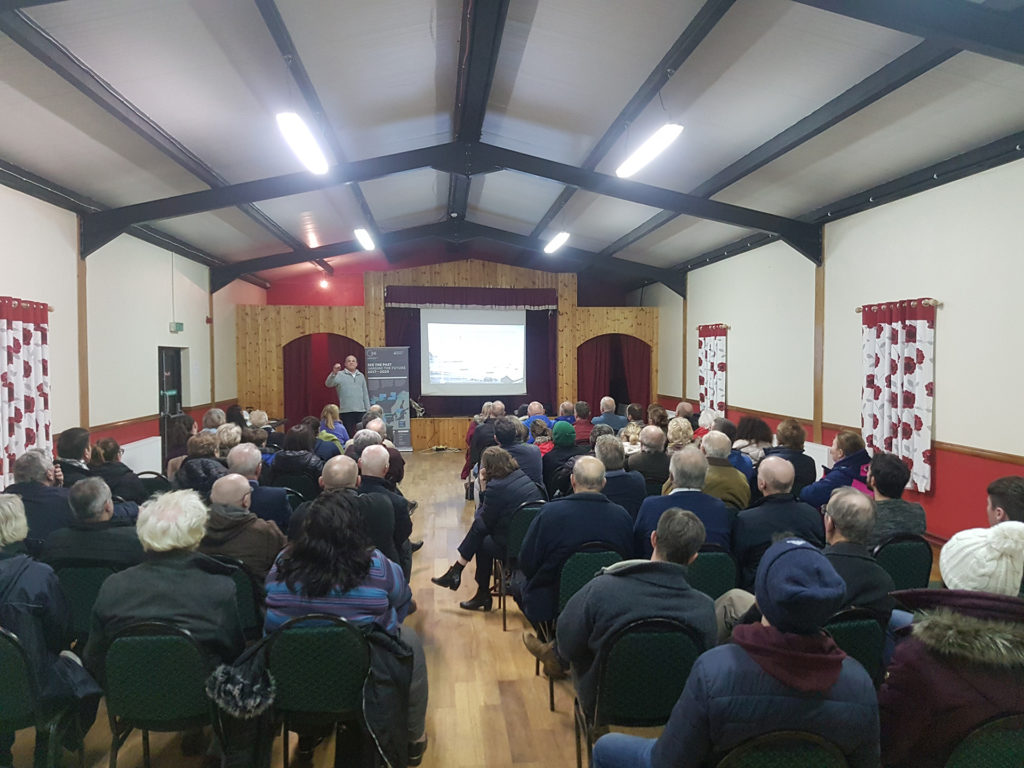
You simply need to find a room that can accommodate a hundred people, and that acts as a shared space at the heart of the community. There will probably be a small fee to pay, and often in cash. If you’ve found your gatekeepers, they’ll be the ones to open these doors.
There are few things to check, when booking the venue.
How much time will you need to set-up and clear everything away?
Give yourself enough time and book the hall to take account of this.
Does it have enough chairs, tables etc?
Do you need to bring anything with you?
This could be extension leads, pop-up stands with funders logos, milk, projectors and screens, cash to pay for the hall. Make a list, check it twice. If it’s a rural setting there might not be any shops nearby, as is the case on Inch.
Is the heating working? Will it be on?
Or if you’re lucky enough to work in a warm climate… the AC
Is there a mobile phone signal or WiFi? And if so, what’s the password?
Don’t take anyone’s word on this. Go and do a recce of the hall, and make sure you can connect to the internet. At our first meeting on Inch, my iPhone was jammed into the back of my pick-up truck, parked just outside one of the hall’s windows. We used it as a mobile hotspot, as it was the only way we could get an internet connection.
Are there refreshment facilities for tea/coffee?
Will the local committee organise the refreshments, or does the County Museum’s Director have to be there to make the tea and coffee?
This is a hat-tip to Judith McCarthy, Donegal County Museum’s Director and Curator, who served the teas, coffee and biscuits at our first meeting on Inch.
Do the recce, don’t leave it to chance
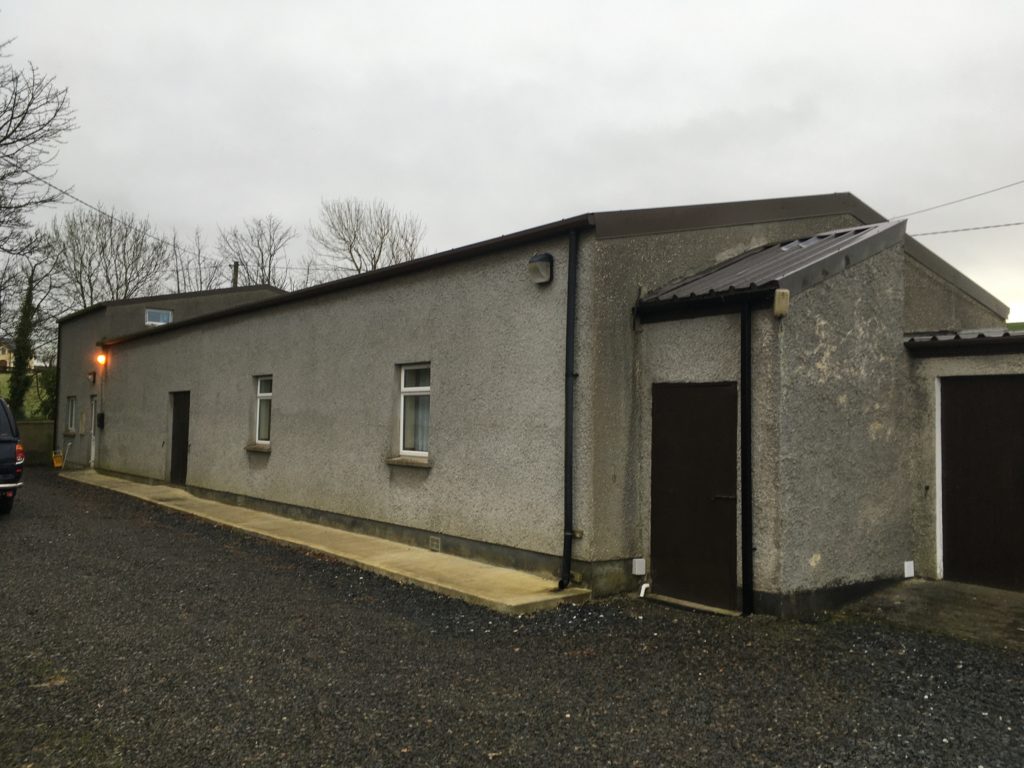
Inch Hall in the January gloom. The window to the left was our WiFi portal.
When is a good time?
You might have the luxury of time. Your project might be a year long, maybe longer, or you might have to squeeze everything in to a few months. When you meet the community for the first time is entirely dependent on your project, but you should do it as soon as possible. Remember our definition?
Co-production is the process by which we facilitate and empower the community, both individually and collectively, to become the curators, makers and performers of their own stories.
This is not your project. It belongs to the community, and if you leave their participation until half-way through the project, then you do them, and the idea of co-production, a disservice. And, which is more, they’ll probably feel very much like those visitors and that footfall, rather than the curators.
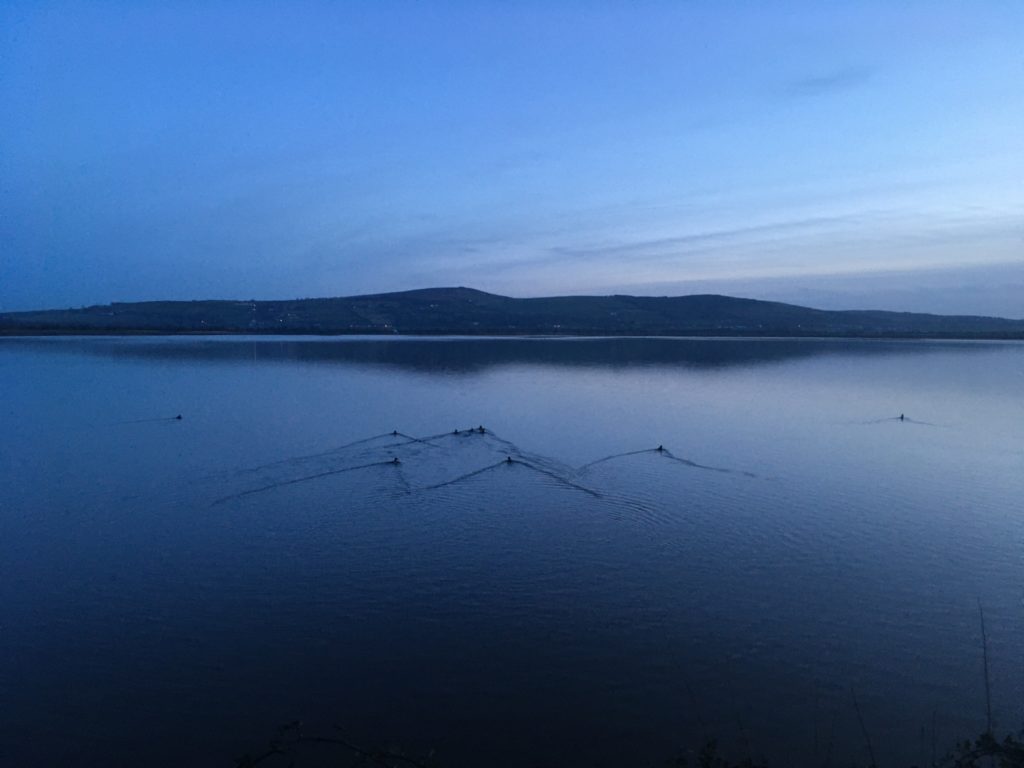
When you have your first meeting is dependent on any number of factors. My preference is for early-evening, mid-week, but that may be a cultural response to living where I do. You’ll know best, and if you don’t, ask the gatekeepers, because they know the community better than you. There follows a list of things to look out for, all of which have happened to me at some point in my work, only the names have been changed.
Don’t book the hall when these are happening…
Religious festivals, services, holy-days
“Oh, you can’t start at seven. Mass is only just over then, and they’ll not be here before half-past. Father Doherty’s saying it, and he’s quite slow.”
Sporting matches featuring local teams
“Ah now, St Finbarr’s are playing in the county semi-final on Tuesday, and there’ll not be a sinner about.”
Football matches, especially during World Cups etc.
Zumba, badminton, yoga, pilates, karate etc. in a different room within the community centre
“Sorry about the noise, it’s Fidelma and her modern dance class. She’ll be finished at nine.”
When a new fishing boat arrives at her home port. The one below…

“We’re a bit short on numbers this evening. The Áine’s due in and everybody will be down on the quays”
School holiday or vacation weeks
December
And I’m not being facile about December, either. Christmas is coming, people switch off, nobody is interested in community co-production while the tinsel is out.
Time and culture
In Donegal, our meals are: Breakfast in the morning, Dinner at lunchtime and Tea in the evening. The Tea is our evening meal, not the drink, and it happens at 6-6.30pm. Wherever you are, you will know the culture better than me, and what time people eat in the evening. Don’t expect people to miss their ‘Tea’.
Getting the word out
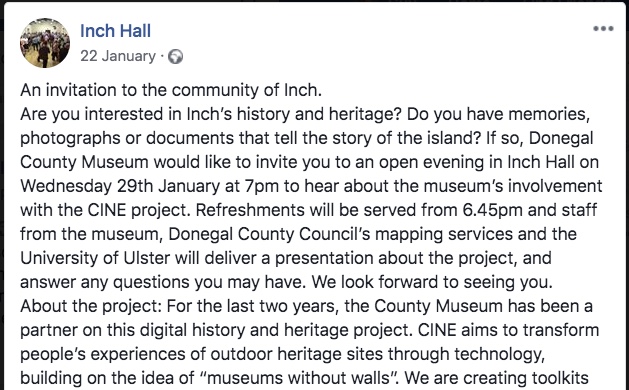
Again, this a question to ask of the gatekeepers. How do we let people know that our open-evening information session is on?
On Inch, we used the Catholic parish magazine, the Presbyterian congregation newsletter, Inch Hall’s Facebook page, and most importantly, and most effectively, the gatekeepers themselves and their contacts in the community.
However you publicise the event, even if you put a leaflet through every door, inevitably there will be some people who ‘didn’t know about it’. There’s nothing you can do about it, so don’t feel you’ve failed in your publicity push. Everybody will know about the project soon enough.
How many people are we expecting?
Yes, of course you want to know. How many teas/coffees, packs of biscuits? How many chairs should we put out? How many feedback/response forms should I print? Honestly, if I could answer those questions then I’d be doing the lottery more often. From the gatekeepers you’ll hear…
‘Oh yes, everybody knows about it. We should get a good few…’ or ‘Now I know Mrs. Gallagher and Edie and Michael can’t make it, but there should be a good crowd all the same…’
What I do know is this…
Whoever comes, they are the right people…
Perspectives V
Arranmore is another Donegal island of the west coast. It has an area of 22km2 and a population of 469. It is connected to the mainland by two ferry services – The Blue Ferry and the Red Ferry. The Blue ferry is the known as the fast ferry, but it takes the same time to cross the channel from Burtonport as the Red Ferry. It’s a long story. The island has an Irish-speaking school, with many students crossing from the mainland, there and back daily. I was invited to work with the local community to create a play based on the island’s history and I realised very quickly that ‘the local community’ was not necessarily representative of the local community.
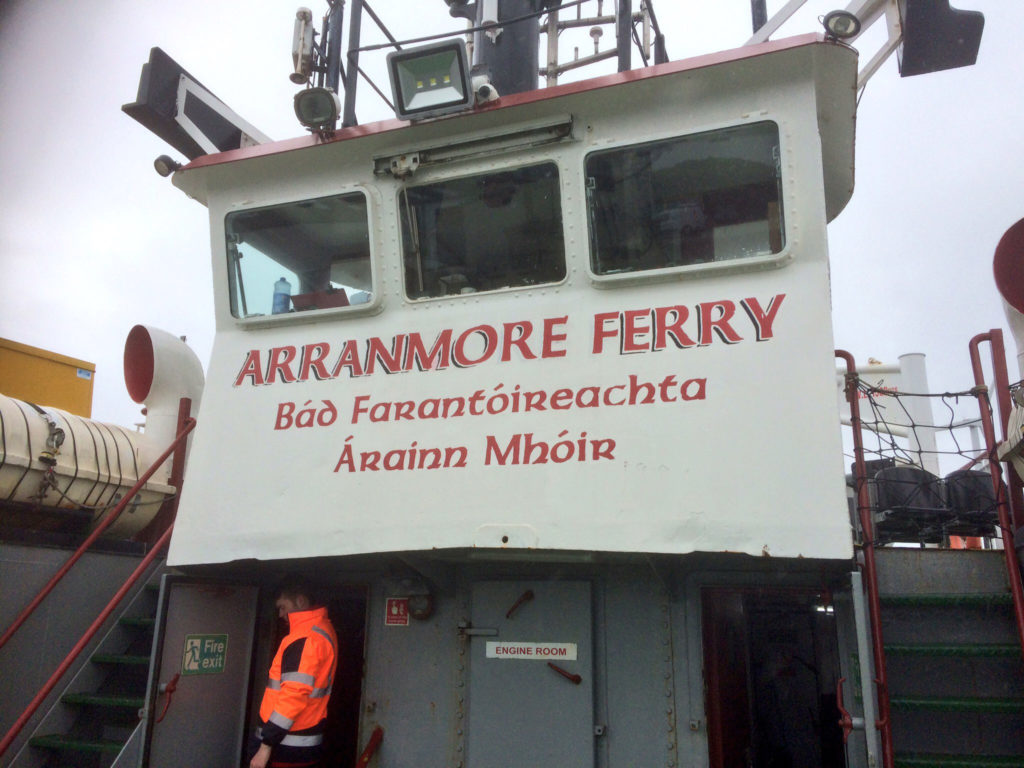
It is very easy to think of a small community as homogeneous, but the reality is that ‘the local community’ is always an aggregation of sub-sets. On Arranmore, there are those that live beyond the bridge in Aphort, and those that live on the eastern side of the island, in Leabgarrow. There are islanders, families who have lived there for generations, and there are blow-ins, people who have just moved there, even if it was 30 years ago. There are those who use the Blue ferry and those who take the Red.
On Inch Island, there are similar divisions; on an island only 7 kms long, the townland of Binalt is a cul-de-sac, nearly 10km from Inch pier in Grange. Other than meeting on the only road that joins the island to the mainland, the residents of Binalt and Grange rarely see each other. Then there are islanders whose families go back generations, and the commuters who live on the island but work in Derry, leaving the island at 7.30am and returning at 6pm. In any small community, rural or urban, you will encounter these sub-sets – we could call them micro-communities. Each of these micro-communities will have their own needs and aspirations. Each of them will have a different idea of what is important and what they want to achieve from the co-production process, or indeed, whether they have any interest at all in the process. As the co-production facilitator, you will have to ensure you take both ferries.


